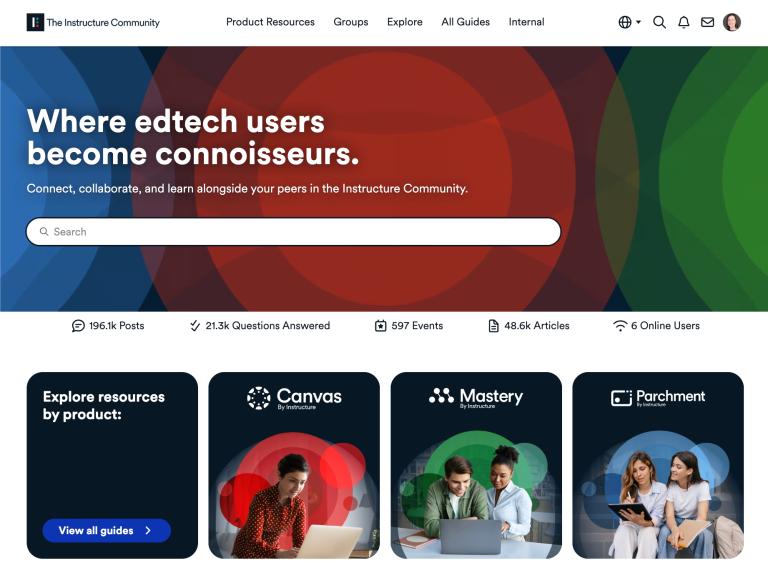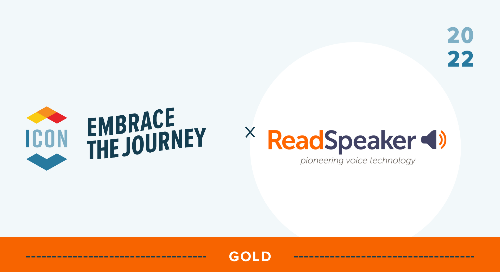With an increase in blended learning in today’s ever-evolving educational landscape, educators are challenged to not only make content accessible but also more engaging for a diverse population of students. Despite the challenges, this move to an increased online presence provides the learning community with great opportunities. Digital courses allow us to adapt content to the learner, as well as provide personalized learning tools. This is a win not only for those with disabilities but for all students and the educators that support them.
The Growing Awareness of Accessibility
There is a growing awareness of neurodiversity in our student populations, whether sensory or motor impairments, dyslexia, dysgraphia, ADHD, learning in a second language, or low language proficiency. This awareness has reached our legal structures, with worldwide legislation being implemented to ensure that all learning environments are accessible. Such laws include the Americans with Disabilities Act Amendments Act (ADAAA), Disability Standards for Education 2005 (Australia) and the EU Accessibility Act.
With the increasing expectations and requirements for accessibility, combined with innovative education technology, educators can now take the necessary steps to create an inclusive learning environment.
The Curb Cut Effect
The curb cut effect is the phenomenon of disability-friendly features being used and appreciated by a larger group than the people they were designed for. When it comes to accessible content, we now know that what is beneficial to those with disabilities, is beneficial to all students. Some students prefer visuals, while others prefer audio or a hands-on approach, and many prefer a mix of several methods, irrespective of disabilities. Therefore, creating content that can be consumed by a diverse population with various needs should be the standard.
Universal Design for Learning (UDL) is a framework used to create a flexible and inclusive learning environment for all types of students. By using multiple methods of presentation students better comprehend and retain information. Instead of using technologies to only help a few students, UDL offers these benefits to all students, allowing them to learn in the way that works best for them.
Providing students with the opportunity to consume content in multiple ways results in higher learner engagement, more efficient learning, and increased confidence in their abilities.
Accessible Design is Just Good Design
Educators can address accessibility and engagement as well as improve learning results for all students at the same time. This means attracting and retaining diverse student populations, and helping those students succeed and complete courses and training. An accessible environment benefits everyone.
How Can ReadSpeaker’s Text-to-Speech Tools Help?
Text-to-speech is one such tool that can be used on a personal level, or easily integrated into learning management systems to provide engaging and accessible content for all students.
ReadSpeaker provides a full-service learning suite of speech-enhanced tools to support students and institutions.
A Suite of Learning Tools
Students can leverage Text Mode for dyslexic font, change and enlarge text, download course content to mp3 and use highlighting tools to follow along with the content. This leads to deeper engagement for learners and ultimately better student success. ReadSpeaker tools can easily be integrated into Canvas to provide the many tools that can be used to create a supportive and inclusive learning environment.
Course Completion
Online tools meet students where they are: in the Canvas LMS environment. Students can learn at their own pace with visual aids, digital audio proctoring, or on the go with downloaded audio of course content. Students who have better tools can get more done.
Accessibility Compliance
In addition to supporting students directly, text-to-speech helps institutions simplify the rigorous requirements for compliance. Required by law, there is an increasing expectation that institutions ensure students are provided an accessible learning environment. Text-to-speech helps educators meet the requirements of legislation such as the Americans with Disabilities Act Amendments Act (ADAAA), Disability Standards for Education 2005, and the EU Accessibility Act.
Accommodations and Assessments
The ReadSpeaker text-to-speech tool is assistive technology that supports students who benefit from accommodations by offering them the opportunity to listen to exams and assessments directly in the Canvas environment. We use high-quality natural-sounding voices to digitally read quizzes and exams, helping students to better understand and succeed in their tests and evaluations.
ReadSpeaker Text-to-Speech is Just Good Design
ReadSpeaker for Canvas allows institutions to quickly and easily integrate text-to-speech directly into the Canvas environment. With a click of the Listen button students can listen while following along with the highlighted text. With the accompanying suite of speech-enhanced learning tools, ReadSpeaker not only addresses many of the common accessibility issues that students face but creates a learning environment to help ALL students be successful.
Why not see what text-to-speech would look like in your Canvas environment?
Contact us for a free sandbox demo or find more information at readspeaker.com/education/canvas.
Related Content
 inst-3step.jpg
inst-3step.jpgBlogs
 13lmsfeaturesthatbenefitstudentlearning.jpg
13lmsfeaturesthatbenefitstudentlearning.jpgBlogs
 community-homepage.jpg
community-homepage.jpgBlogs
